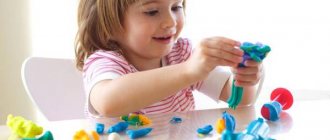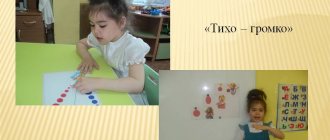Speech is one of the indicators of child development. As children grow up, they expand their vocabulary and actively explore the world around them. However, many babies, as they grow up, face problems when reproducing certain sounds. This is the norm in the first years of life. But if a child pronounces sounds incorrectly at an older age, then we can talk about a violation of sound pronunciation.
Violation of sound pronunciation is the most common speech defect that speech therapists constantly encounter. Pathology comes in various types:
- dyslalia with normal hearing and a healthy central nervous system;
- dyslalia in children with different degrees of hearing loss;
- dysarthria with normal hearing, but with organic lesions of the central nervous system.
Problems with sound production most often occur in preschool age. At this time, it is necessary to correct the speech defect. However, many parents do not react to the fact that the child cannot pronounce a large number of sounds. Some consider it unimportant, while others are confident that everything will go away on its own.
Norms for the development of sound pronunciation
If a child has difficulty pronouncing sounds, this is not always a cause for concern. In some cases, this is an age-related developmental norm. At each stage of growing up, a child acquires certain speech skills.
- from 1 month – children begin to unconsciously pronounce the vowel sounds “Y”, “U”, “A”, “E”. In infancy, the child mostly lies down, and the tongue can be thrown back. Therefore, sometimes the baby manages to pronounce several back-lingual sounds, for example, “G” or “X”;
- from 4 to 5 months - children try to practice reproducing individual sounds;
- from 5 to 10 months – the baby moves from individual sounds to syllables. Usually these are "Ba", "Ta", "Pa", Da" and "Ma". The number of syllables gradually increases. If up to 4 months the baby “booms,” then from 5 to 10 months he “babbles”;
- from 10 to 18 months - the child tries to pronounce his first words. By this point, children are able to consciously reproduce most of the vowel sounds - “A”, “Y”, “O”, “E”, “I” and “U”, as well as some consonant letters - “M”, “T”, “ P", "D", "B", "N", "K", "V", "G", "Y", "F", "X";
- from 1.5 to 3 years - the child is able to pronounce several whistling sounds - “C”, “S” and “Z”. If he cannot cope with this task, then you should pay attention to the situation. Note that from 1.5 to 2 years the baby often pronounces sounds incorrectly. For example, instead of “З” it is used “Дь” (“tooth”/“doubt”/“oak”). By the age of three, children often experience a softening of vowel and consonant sounds (“tumba - “tyumbya”, “baby - “crumpled”). As a rule, this goes away by the age of four;
- from 3 to 4 years. Children proceed to play hissing sounds - “Shch”, “Sh”, “Ch” and “Zh”. Until this moment, as a rule, they replace them with similar ones - “Sh” with “S” (“school” - “skola”), “Ch” with “C” or “T” (“chub” - “tsyub” / “tube”), etc. If a child up to five years old does not pronounce hissing sounds well, then this is the norm. The baby gradually learns, so these letters may not be pronounced correctly in all words. There is a partial replacement of sounds, for example, “the cat caught the mouse,” etc. It is important to regularly work with the child and correct him. Then he will quickly master the new sound;
- from 4 to 5 years. The appearance of sonorous sounds is observed. But up to 4.5 years, for example, the hard “L” can be replaced with the soft “L”. By the age of five, the child can already pronounce “R” and “L” well. This is the most complex group of sounds. Therefore, there is no need to demand from a child that at the age of three he clearly says “fish”, “crayfish” and other “growling” words. Moreover, if you put a lot of pressure on your baby, he may begin to pronounce “R” in the manner of the French language. This deviation will be more difficult to correct at an older age. Remember that it is better to turn on the sound when it is not there yet than to re-teach the child.
Naturally, all children are individual. Therefore, minor deviations from the norm are allowed. If parents constantly talk and practice with their child, then such a child pronounces sounds correctly by the age of five. However, more and more often preschool children have problems with sound pronunciation. Please note that if a child pronounces sounds incorrectly while at school, he may have problems learning to read and write.
How do sound pronunciation disorders manifest themselves?
If the baby pronounces sounds incorrectly, this may indicate dyslalia or dysarthria. These deviations have some differences. With dyslalia, the pronunciation of sounds of different groups is impaired - sonorant, hissing, front-lingual, and so on. Speech defects can manifest themselves in different ways:
- absence of sounds (omission of complex letters in the words “yoke” - “yoke”);
- replacing sounds (together with “R” the child pronounces “L”, for example “fish” - “lyba”);
- distortion of sounds (French “R”, side “W”, etc.).
Dyslalia often develops against the background of hearing loss. Children with hearing loss have difficulty distinguishing between whistling and hissing, dull and voiced sounds.
With dysarthria, the child pronounces consonants and vowels incorrectly. Improper breathing and decreased emotional expressiveness of speech are also observed. It is worth noting that disturbances in the pronunciation of sounds associated with dysarthria are more stable. Therefore, correction may require more time and effort.
Causes of dyslalia
The most common speech disorder is a violation of the sound (phonemic) design of speech. It manifests itself in defects in the reproduction of one or more sounds, in distortion, in the replacement of some sounds with others [r] with [l], in mixing sounds or their omission during speech. According to statistics, 25-30% of preschool children, 17-20% of primary schoolchildren, 1% of middle school students and adults have dyslalia. The cause of dyslalia is either anatomical defects of the organs of articulation, or the child’s incorrect acquisition of the pronunciation of certain sounds. In this regard, in modern speech therapy, two forms of dyslalia are distinguished: mechanical and functional.
Causes of sound pronunciation problems
If the baby pronounces a number of sounds incorrectly and indistinctly, then it is worth being examined by a neurologist and speech therapist. The causes of problems with sound pronunciation may be different. However, it is necessary to identify the problem in a timely manner in order to select an effective correction program.
Dyslalia can occur due to:
- pathologies of the development of the speech apparatus (malocclusion, short frenulum, etc.);
- presence of two languages in the family;
- incorrect approach to the development of a child’s speech (communication in a “lisping” language);
- hearing loss;
- problems with sound pronunciation in one of the parents (children tend to tremble).
Dysarthria develops with damage to the central nervous system, which can be caused by:
- problems during intrauterine development;
- injuries during childbirth (umbilical cord entanglement, etc.);
- cerebral palsy;
- Rhesus conflict;
- serious infections that the child suffers;
- problems with blood circulation in the brain;
- brain injuries.
Even serious problems with the pronunciation of sounds can be corrected. However, many parents have one question. If sound pronunciation can be corrected, then why do many adults speak incorrectly? This is due to two factors. Some parents believe that there is nothing wrong with the incorrect pronunciation of certain sounds. There are also cases when they begin to provide assistance without identifying the cause of the speech defect. Naturally, correction of dyslalia with dysarthria will not have an effect.
“Why does the child speak incorrectly?”
Consultation for parents:
“Why does the child speak incorrectly?”
Author: Anastasia Viktorovna Vorobyeva, speech therapist, MKOU “Novogurovskaya Secondary School” (preschool education)
Parents are often concerned with the question: “What causes this or that speech disorder, if no one in the family has ever had problems with it?” This material will help parents and teachers understand this issue and approach more consciously joint work to overcome speech disorders in children.
Why does the child speak incorrectly?
We will look at the causes of speech disorders and “risk factors,” which are understood as conditions that contribute to the emergence and development of these disorders.
1. Causes of speech impairment in children.
The cause of a speech disorder is understood as an internal and external effect on the body, which determines the specifics of a speech disorder and without which the latter cannot occur.
There are external and internal causes.
External
(reasons of a social nature):
1. Insufficient verbal communication, lack of an emotionally positive environment, extremely noisy environment. For normal speech development of a child, communication must be meaningful, take place against an emotionally positive background and encourage response. It is not enough for him to simply listen to sounds (cassette recorder, TV), he needs direct communication with an adult. The reasons for communication are the accumulated impressions in the game, in kindergarten, on excursions, after going to the theater, circus, etc., while listening to works of art. These impressions need to be discussed with the child, because At this time, the child learns the meaning of words, and their connections with images of objects in the surrounding reality are formed.
2. Speech development is delayed and sometimes leads to stuttering due to psychological trauma, separation from loved ones, and a long-term traumatic situation in the family.
3. Incorrect speech of people around the child. Incorrect speech by adults around the child, as well as inattention to his speech, are common causes of defective sound pronunciation. If a child has as a role model sounds that are incorrectly pronounced by adults (for example, “burr” [r]), then he follows this model and forms a standard for himself.
“Bilingualism” in the family also plays a negative role in this regard, when during the period of formation of sound pronunciation the child constantly hears sounds articulated differently.
There are absurd cases when correctly speaking adults begin to consciously “adjust” to the child’s speech and copy his incorrect pronunciation, likening their speech to the speech of a small child. Due to this, the child is deprived of the right role model and loses the incentive to improve his speech.
From this point of view, a child’s prolonged stay among peers who speak incorrectly is also harmful, since there is no example of the correct pronunciation of speech sounds.
In all of the above cases, the child has a normal speech apparatus, which fully allows him to master correct sound pronunciation, but the surrounding social environment interferes with him. Internal (organic reasons):
1. Decreased biological hearing. When there is a decrease in hearing (hard of hearing), the child’s speech develops with deviations from the norm, including in relation to sound pronunciation. Therefore, at the slightest suspicion of hearing loss in a child, you should immediately seek help from specialists. Because the further state of the child’s auditory function and speech, and therefore his entire school fate, depends on the timeliness of assistance.
2. Impaired auditory differentiation of speech sounds. In addition to a decrease in biological hearing, the formation of sound pronunciation is also negatively affected by a violation of the auditory differentiation of speech sounds, i.e. inability to distinguish them by ear. In this case, children hear well, but some similar-sounding sounds (for example, S and Ts, Ch and Shch, etc.) seem the same to them and therefore cannot be distinguished by ear. Why does this interfere with mastering the correct pronunciation of sounds?
The fact is that if the sounds S and C seem the same to the child, then he does not feel the need to master the more complex articulation of the sound C, because the pronunciation of “saplya”
instead of
“heron
” suits him. This means that the main reason for sound substitutions here is difficulties in auditory differentiation of sounds.
3. Violations of the anatomical structure of the organs of the articulatory apparatus. A common cause of incorrect pronunciation of sounds is pronounced defects in the structure of the child’s speech organs, which do not allow him to reproduce the correct articulation of certain sounds. Defects often found in children: * defect in the structure of the jaws
- this is an incorrect bite, i.e.
incorrect arrangement of the teeth of the upper and lower jaws in relation to each other; * dental anomalies:
- rare arrangement of teeth;
- location of teeth outside the jaw arch; - teeth that are too small or deformed; - presence of diastema (gap between the upper incisors). * anomalies in the structure of the tongue:
- too large or small tongue;
- a short hyoid frenulum that does not allow it to rise upward. * anomalies in the structure of the soft and hard palate:
- clefts of the soft and hard palate;
- too high or low hard palate. * abnormalities in the structure of the lips:
- cleft lip; - underdevelopment of lips.
4. Insufficient mobility of the articulatory organs, especially the tongue and lips.
At the moment of pronouncing a sound, the tongue, lips, and soft palate approach or close with the fixed parts of the articulatory apparatus: teeth, alveoli, and hard palate. Insufficient mobility of the muscles of the articulatory apparatus does not make it possible to carry out more precise movements of the tongue and lips, which create the conditions for the correct pronunciation of difficult sounds.
2. Factors
Why does this happen? This or that reason must be due to something.
1. Weakness of neurodynamic processes of excitation and inhibition as a result of somatic (physical) weakness of the child. Somatic weakness can be caused by: - frequent illnesses; — insufficient nutrition; - insufficient sleep (10-11 hours) during the period of formation of new speech patterns, new speech sounds.
2. The impact of various unfavorable factors on the child’s central nervous system and on his body as a whole. These factors can affect the prenatal period, during childbirth and after the birth of the child.
Adverse factors that acted during intrauterine development:
- maternal diseases during pregnancy with infections (rubella, cytomegaly, taxoplasmosis, influenza, etc.); - intoxication; - toxicosis, especially in the first 4 months of pregnancy; - taking medications; - alcoholism, smoking; - incompatibility of the Rh factor of the blood of the mother and child; - cardiovascular pathology of the mother - renal failure - hormonal diseases of the mother (diabetes mellitus) - physical pressure on the fetus (due to the structure of the uterus) - psychological trauma - the influence of high temperatures (hot workshop, profession of a cook, being in unusually hot conditions during pregnancy climate).
The leading place among the factors influencing speech development is occupied by birth injuries and asphyxia.
(oxygen starvation of the fetus at the time of birth).
This occurs due to the fact that: - a woman has a narrow pelvis - prolonged or rapid labor - premature release of water - entanglement in the umbilical cord - incorrect presentation of the fetus - obstetric manipulations that can damage the nervous system of the fetus, etc. Birth trauma leads to intracranial hemorrhage and death of nerves cells. Intracranial hemorrhages can also affect the speech areas of the brain, which entails various speech disorders (from impaired sound pronunciation to alalia). They can be combined with other developmental defects: hearing, vision, musculoskeletal system, intelligence. Unfavorable factors operating in the first years of a child’s life:
- lack of emotionally positive communication with adults;
- disruption of the relationship between mother and child; - traumatic brain injuries, tumors; - cerebrovascular accident. Hereditary factors (changes in genetic information).
They are predisposing conditions and appear under the influence of any adverse influences.
They act in combination with social and internal factors (organic): - features of the nervous system - intellectual failure - metabolic disorders, etc. Thus, any general or neuropsychic disease of a child in the first years of life is usually accompanied by a violation of speech development. There are 3 critical periods
in the development of speech function. 1. 1-2 years. Speech development begins, the driving force of which is the need for communication. 2. 3 years. Coherent speech develops intensively. 3. 6-7 years. The beginning of the development of written speech.
During these periods, the load on the child’s central nervous system increases and it is rebuilt. Any unfavorable factors, seemingly insignificant, operating during this period can affect the development of speech, and existing ones manifest themselves most strongly, and new ones may arise.
When increased demands are placed on the child, breakdowns in nervous activity may occur.
It should be noted that these factors act in combination, i.e. For the development of a child’s speech activity, the maturity of his central nervous system and the peculiarity of the child’s interaction with the outside world—the unity of the social and biological—are important.
It is important to understand that early identification of the problem and joint assistance from a speech therapist, parents and medical specialists can eliminate or significantly reduce speech disorders, especially during preschool childhood, when the child’s compensatory capabilities are unique.
Corrective work
If a child pronounces sounds incorrectly, you should contact a speech therapist. He will examine the baby, determine the cause of the disorder and prescribe an effective assistance program. It is selected individually in each case. In order for a child to speak normally, it is necessary to eliminate the cause of the violation of pronunciation of sounds. In some cases, surgical correction of the speech apparatus is required. Then the speech therapist refers the child to the dentist. After this, you can begin to produce the correct speech.
Many parents worry when their child pronounces many sounds incorrectly. In this case, to correct the disorder, it is better to contact the NEAPL Speech Therapy and Psychology Center. Experienced specialists use an integrated approach to correcting speech defects using speech therapy massage, play sessions, logorhythmics, and so on. A team of professionals works on the correct pronunciation of sounds, which allows you to achieve a lasting effect.
Forms: mechanical and functional dyslalia
Mechanical
(organic) dyslalia is caused by anatomical defects in the structure of the organs of the speech apparatus. The causes of such defects can be either congenital or acquired. Damage to the bone or muscle structure of the peripheral speech apparatus occurred due to hereditary factors, birth trauma or trauma in the postnatal period. Such damage includes:
1) anomalies of the dentofacial system:
– gap between the front teeth;
– absence of teeth or their distortion: location outside the jaw arch, growing with a turn, tilt, rotten, crooked, incomplete jaw;
– defects in the structure of the jaws: prognathia – the upper jaw is sharply pushed forward, hanging over the lower jaw; progeny - the lower jaw protrudes sharply forward; bite defects – deep, open (front, lateral, bilateral, cross). When malocclusion occurs, the function of the masticatory system suffers, and breathing is often impaired. In combination with dental defects, signs such as squelching, whispering, and smacking appear.
2) irregular structure of the sky: high, gothic, narrow, flat. With this structure, the correct pronunciation of hissing, whistling and sonorant sounds suffers, since the tongue has to be raised higher. For the same reason, speech becomes slurred.
3) pathological distortion of the size and shape of the tongue:
– very small tongue – microglossia;
– too large tongue – macroglossia;
– wide and short;
– narrow and subtle tongue;
– shortened hyoid frenulum. In this case, the pronunciation of the sounds [р] and [р'] is disrupted.
4) lip defects: thin, thick, sedentary, massive, narrow. This leads to incorrect pronunciation of labial, labiodental and labialized vowel sounds.
Functional dyslalia
– in the absence of organic lesions of the central nervous system and articulation organs, the child distorts sounds because he has learned them incorrectly. The pronunciation of one or more sounds may be impaired for various reasons.
- Biological factors.
– general muscle weakness due to somatic diseases, especially during the sensitive period of speech formation.
– minimal brain dysfunction resulting in mental retardation.
– delayed appearance of speech, slight impairment of phonemic perception.
– decreased physical hearing during a period sensitive to speech.
2. Social factors. During the period of speech formation, the child had an unfavorable social environment; adults themselves had speech defects or made grammatically incorrect statements. Perhaps there was a limitation of speech contacts, bilingualism in the family, or adults lisped excessively and did not correct the child’s distorted pronunciation. The lack of development of sound means of communication also depends on nutrition. If a child under two years of age was fed liquid soft food, products softened in a blender, deliberately avoiding solid foods, such as pieces of meat, potatoes, bread, cookies, which must be chewed thoroughly, then his chewing function was underdeveloped, the muscles of the tongue were not sufficiently strengthened, which directly affects the pronunciation of certain sounds. First of all, this applies to the back lingual sounds [k], [g], [x] and their soft variants.
Tips for parents
Quite often, the child pronounces the correct sounds during classes with speech therapists and teachers. But, returning home, he loses control of himself. This behavior is allowed in the first steps of correction, since the child learns to control himself gradually. However, parents should be persistent. They can help form auditory attention faster.
Many adults communicate little with children, limiting themselves to only short remarks, for example, “go eat,” “wash your hands,” and so on. To form the correct sound pronunciation, you need to talk more with the child. Voice any situations, accompanying them with visual contact. For correct pronunciation of sounds, the baby must see the articulation of the parents. Therefore, try to speak clearly, clearly and with intonation. When communicating with your child, avoid complex sentences. Too much information will not allow him to focus on sounds. At the same time, children often acquire the bad habit of listening to adults mechanically. This may interfere with correction, since the child will transfer this behavior to the teacher’s office.
Read more books to your baby. This will give him the opportunity not only to remember the correct sounds, but will also significantly expand his horizons. Fairy tales, poems, ditties and stories can be repeated several times. Children perceive better information that is already familiar to them. To learn how to reproduce sounds correctly, you can also role-play scenes and use various objects and gestures. Children like this form of activity and they do not resist. Watch how your baby pronounces sounds, whether he pronounces them clearly or tries to swallow them. Don't rush him while reading poetry. Let him say every sound.
The development of fine motor skills also has a good effect on the formation of correct speech. You will be surprised that modeling from plasticine or drawing will help your baby pronounce sounds well. This will also have a positive impact on the development of written speech in the future. The child must be able to fasten buttons, tie shoelaces, knots and bows. This also affects the correct pronunciation of sounds due to the development of hand-eye coordination.










